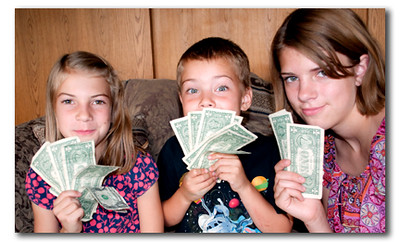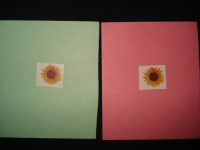Find many creative ideas to get children leaping ahead in their physical development, all while done with things found at home. This is the time to take a minute to watch these and strengthen your options while stuck at home. Enjoy!
Building on "Teaching Kids About Money, Part 1" and "Part 2," the following practical ideas can be considered:
Money games for pre-schoolers to help them learn the worth of money:
- Take file cards and trace around coins. The child can try to fit coins into the spots. Make cards in which the value is explained. One traced nickel equals five traced pennies, one dime equals two traced nickels, and so on. (This is a tough concepts for youngins, since the dime is smaller than a nickel but worth more.)
Note: children like handling coins. Do so for a short time. Do not do it until they lose interest. And do not do it around littles who put them in their mouths. Older children can play with these cards on a tray or box lid to keep it out of reach of younger siblings.
Pouring can wire the brain for math -- quantity, more/less -- when done regularly. And it can be done with lots of different things.
For starters, during bath time add big and little cups. How many little cups fit into the big cup? Bring some measuring spoons along. How many measuring spoons fill a very small cup? (If you're using something small to pour into a big container, this may get discouraging.) Add bubbles to the bath for variety. (Word of warning: girls may get irritated skin in sensitive areas if spending too long in bubbles.)
Pouring is also good for getting finger, hand, and arm muscles firing. Even better when you add stirring (pretending to cook) into the mix. These are so helpful with everyday tasks.
Anything can be made into a matching game. Just look around your house. Do you have two forks? Two noodles? The point is, you don't have to go out and buy anything to make a matching game.
In matching, the brain is being wired in both pre-math and pre-reading ways to notice what's alike and what's different. For example, how does a child learn to differentiate between an "a" and a "d"? They need to see all the parts of something before they decide if they are the same or different.
So, starting when children are toddlers, begin to simply notice and name the difference in things. Big rock, small rock. Two different leaves. You can mention similarities as well. Then point out the differences. Two different balls. Mention size, color, etc. This is the first step. Just notice and point out things that are the same and different in everyday life.




